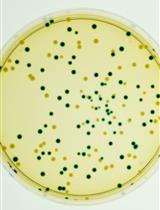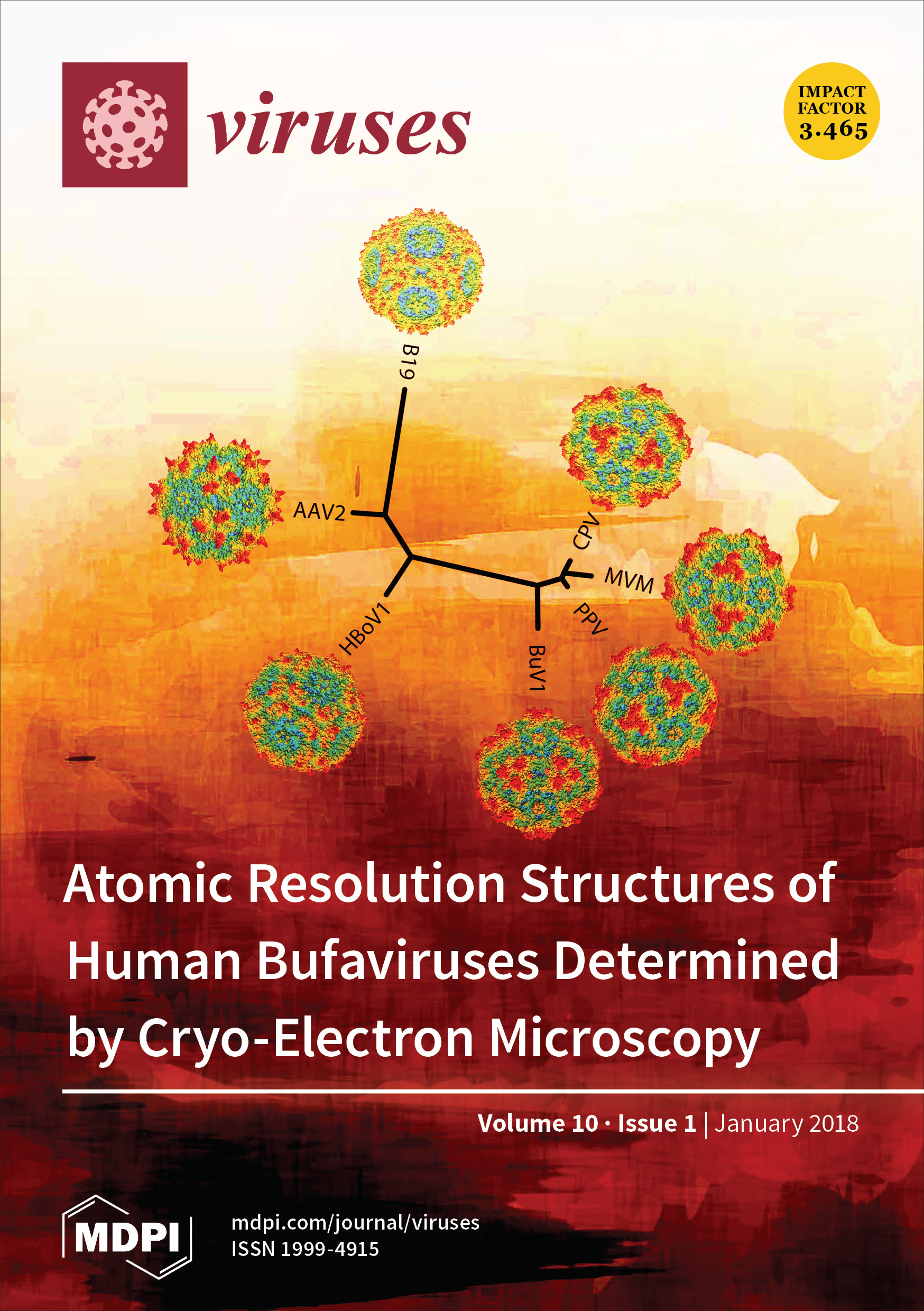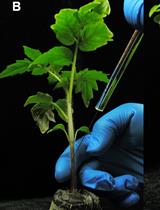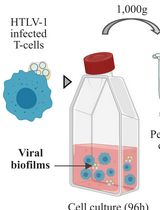- EN - English
- CN - 中文
Isolation and CryoTEM of Phages Infecting Bacterial Wine Spoilers
感染葡萄酒腐败细菌的噬菌体分离与冷冻电镜观察
发布: 2020年11月05日第10卷第21期 DOI: 10.21769/BioProtoc.3801 浏览次数: 4379
评审: Alba BlesaRajesh ThippeshappaAnonymous reviewer(s)

相关实验方案

基于β-葡萄糖醛酸酶 (GUS) 的细菌竞争测定以评估植物感染期间适应性的细微差异
Julien S. Luneau [...] Alice Boulanger
2022年07月05日 3143 阅读
Abstract
With the objective to isolate phages infecting wine bacterial spoilers, we designed a method for the isolation and purification of phages infecting grape-associated bacteria. The method proved successful to isolate GC1 tectivirus infecting the acetic acid bacterium Gluconobacter cerinus. The isolated phage represents a new genus within the Tectiviridae, named "Gammatectivirus". Using a traditional technique for the concentration of phage particles involving several steps of centrifugation, further insights in the ultrastructure of GC1 could be observed by cryo electron microscopy, saving time and effort. The simple workflow presented may be applied to other viruses infecting bacteria inhabiting other vegetal niches.
Graphic abstract
Flowchart illustrating the protocol to isolate, concentrate and observe GC1 under cryo-EM
Background
Winemaking is a complex and fluctuating environment that is characterized by the temporal succession of distinct communities of microorganisms. The wine-making process starts with the selection of the fruit and the fermentation of sugars into alcohol by yeasts. In most red and dry white wines, this step is followed by a malolactic fermentation, which reduces acidity, increases microbial stability, and creates good-quality grape wine. In contrast to other food fermentations, little knowledge is so far available on the diversity of viruses infecting bacteria, also known as bacteriophages or phages, in the enological ecosystem (de Melo et al., 2018). However, grapes, and more globally the whole fermentation process, are an interesting crossroad between different ecosystems (insect, plant and its rhizosphere, soil and human), and may turn out to represent a valuable source for genome innovation for phages and their bacterial hosts. From the technological point of view, the characterization of phages from the enological niche could also represent an eco-friendly alternative to chemicals to limit bacterial spoilage during wine-making. Among established wine spoilers, acetic acid bacteria (AAB) negatively affect wine quality because of their ability to increase the volatile acidity of wine by the production of acetic acid among other compounds (Du Toit and Pretorius, 2000; De Roos and De Vuyst, 2018). Here, we detail a simple method for the screening and isolation of phages infecting AAB, that can be applied to other fruits (Philippe et al., 2018). Phage particles from small-scale production were concentrated by centrifugation, and time-consuming steps involving PEG precipitation or CsCl gradients were avoided. Cryo electron microscopy (cryo-EM) (Cuervo and Carrascosa, 2018) provided high resolution and distinctive features in the ultratructure of tectiviruses were visible.
Materials and Reagents
Materials
Autoclavable Erlenmeyer flasks (volume: 250 ml) (Dutscher, catalog number: 211907 )
Autoclavable glass tubes (volume: 20 ml) (Dutscher, catalog number: 0 45209 )
Cap-o-test caps (Dutscher, catalog number: 110685B )
Centrifuge tubes (volume: 50 ml) (Fisher Scientific, catalog number: 07-000-983 )
Pasteur pipette
Cryo Grid Box (Electron Microscopy Science, catalog number: 71166-10-W )
Freezer bags (450 ml, VWR, catalog number: 82007-706 )
Lacey Carbon 300 mesh copper grids (Ted Pella, catalog number: 01883)
Polyethersulfone (PES) membrane syringe filters (0.22 μm and 0.45 μm) (Fisher Scientific, catalog numbers: SLGPR33RS ; SLHPR33RS )
Polypropylene microcentrifuge tubes (volume: 1.5 ml) (Fisher Scientific, catalog number: 07-000-244 )
Spatula (Dutscher, catalog number: 442209 )
Spectrophotometer cuvettes (volume: 1.6 ml) (Dutscher, catalog number: 613101 )
Sterile disposable plastic syringes (volume: 50 ml) (Fisher Scientific, catalog number: 13-689-8 )
Sterile 90 x 13 mm Petri dishes (Dutscher, catalog number: 076084B )
Whatmann Filter paper grade 5 (Dutscher, catalog number: 1005055 )
Reagents
Agar-agar (Thermo Fisher Scientific, Fisher ChemicalTM, catalog number: 10548030 )
Calcium chloride dihydrate (CaCl2·2H2O) (Thermo Fisher Scientific, Fisher BioReagents, catalog number: 10306313 )
Ethane (AIR liquide)
Hydrochloric acid, 33.33% (w/v) aqueous solution (Thermo Fisher Scientific, ULTREX, J.T. BakerTM, catalog number: 10782232 )
Liquid nitrogen (cryo-distribution)
Magnesium sulfate heptahydrate (MgSO4·7H2O) (Thermo Fisher Scientific, Fisher BioReagents, catalog number: 10553335 )
Mannitol (Thermo Fisher Scientific, ACROS OrganicsTM, catalog number: 10266523 )
Peptone (Thermo Fisher Scientific, GibcoTM BactoTM Peptone, catalog number: 16299741 )
Sodium chloride (NaCl) (Thermo Fisher Scientific, Technical, catalog number: 10498220 )
Tris-HCl pH 7.5 (Thermo Fisher Scientific, Merck ChemicalsTM, catalog number: 15153685 )
Yeast extracts (Thermo Fisher Scientific, GibcoTM DifcoTM BactoTM, catalog number: 11763553 )
10x Phage buffer (see Recipes)
CaCl2·2H2O and MgSO4·7H2O 100x stock solutions (see Recipes)
YPM broth medium (see Recipes)
YPMΦ solid (“bottom”) medium (see Recipes)
YPMΦ soft agar (see Recipes)
Bacterial strain and samples of enological origin
Fresh crushed grapes (see Procedure)
Gluconobacter cerinus CRBO11179 (Centre de Resources Biologiques OEnologie, Institut des Sciences de la Vigne et du Vin, ISVV, Villenave-d’Ornon, France)
Equipment
Autoclave
Cryo-electron microscope (Thermo Fisher FEI, model: Tecnai F20 200 kV ) equipped with a CCD camera (Thermo Fisher FEI, model: Eagle 4kx4k)
Cryo-holder and cryo-transfer station (Gatan, model: 626 )
Glow Discharge unit (Cordouan Technologies, model: ELMO )
Incubator set to 25 °C
High-speed refrigerated centrifuge (Hitachi, model: CR 22N ) and R15A-0688 rotor
Microwave (Thermo Fisher Scientific, ManutanTM MW20G, catalog number: 15540739 )
Orbital shakers (Stuart, model: SSL1 )
pH meter (Hanna, model: pH211 )
Spectrophotometer (Shimadzu, model: UV-1280 )
Vitrification Robot (Leica Microsystem, model: EM-GP 2 )
Water bath (colume: 4 L) (Benchmark Scientific, MyBath model)
Software
ImageJ (NIH)
Tecnai version 4.3 (ThermoFisher FEI)
TEM Imaging & Analysis version 4.4 (ThermoFisher FEI)
Procedure
文章信息
版权信息
© 2020 The Authors; exclusive licensee Bio-protocol LLC.
如何引用
Chaïb, A., Decossas, M., Philippe, C., Claisse, O., Lambert, O. and Le Marrec, C. (2020). Isolation and CryoTEM of Phages Infecting Bacterial Wine Spoilers. Bio-protocol 10(21): e3801. DOI: 10.21769/BioProtoc.3801.
分类
微生物学 > 微生物-宿主相互作用 > 细菌
细胞生物学 > 细胞分离和培养 > 病毒分离
您对这篇实验方法有问题吗?
在此处发布您的问题,我们将邀请本文作者来回答。同时,我们会将您的问题发布到Bio-protocol Exchange,以便寻求社区成员的帮助。
Share
Bluesky
X
Copy link











